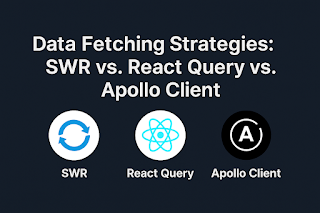Backend-for-Frontend (BFF) Pattern for Front-End Scalability
As front-end applications grow more complex and diversified—spanning web, mobile, and even smart devices—the demand for optimized, personalized, and efficient back-end communication becomes paramount. This is where the Backend-for-Frontend (BFF) design pattern steps in.
In this article, we’ll explore what the BFF pattern is, why it matters, and how it can help front-end scalability.
What is the BFF Pattern?
Backend-for-Frontend (BFF) is a software architectural pattern where each front-end interface (web, mobile, etc.) has its own tailored backend service.
Instead of having a single backend API that serves all clients, the BFF acts as a middle layer between the client and backend services, tailored to the specific needs of each front-end.
In short: One frontend → One BFF → Backend services
Why Use a BFF?
Here’s why the BFF pattern has become increasingly relevant:
- Frontend-Specific Logic: Front-ends often need data formatted differently. A BFF handles that formatting instead of pushing that responsibility to the frontend.
- Better API Performance: Reduces over-fetching or under-fetching by delivering only what a particular client needs.
- Security Abstraction: Keeps sensitive logic and auth flows off the client and handled in a secure backend layer.
- Decoupling: Frontend teams can iterate independently from backend teams.
- Device Optimization: A mobile BFF can compress data, reduce requests, and optimize payload for low-bandwidth environments.
How It Works
Imagine you’re building both a React web app and a Flutter mobile app. Both apps need data from various microservices (users, orders, notifications). Rather than hitting all services directly, each app calls its dedicated BFF:
[React Web App] → [Web BFF] → [User + Order + Notification Services] [Flutter App] → [Mobile BFF] → [User + Order + Notification Services]
Each BFF aggregates, transforms, and returns only the data its frontend requires.
BFF Implementation Tips
- Use Lightweight Frameworks: Express.js, FastAPI, or NestJS are great for building BFFs.
- Keep It Thin: BFFs should focus on orchestration, not business logic.
- Caching: Implement caching where appropriate to reduce redundant backend calls.
- Monitor and Log: Since BFFs are gatekeepers, monitor performance and errors carefully.
- Security: Handle token exchange, authentication, and rate limiting securely.
Benefits of BFF for Front-End Scalability
- Custom APIs for Each Client
- Improved Developer Experience
- Better Security
- Clearer Separation of Concerns
- Faster Iteration for Front-End Teams
Real-World Use Cases
- Netflix: Uses BFF to tailor data for each client (smart TVs, mobile, web).
- Spotify: Custom APIs per platform to improve performance and UX.
- Amazon: Optimized APIs for device-specific experiences.
Conclusion
The BFF pattern is a game-changer for teams dealing with multi-platform front-ends. It empowers frontend scalability, cleaner architecture, and a better developer workflow.
If you’re building apps for multiple platforms or working with microservices, it’s time to consider implementing a BFF strategy.
Source code : https://github.com/pottavijay/backend-for-frontend-app

#BackendForFrontend #FrontendDevelopment #BackendDevelopment #SoftwareArchitecture #WebDevelopment #Microservices #APIDesign #ScalableArchitecture #DevTools #CleanCode #TechTrends #DeveloperExperience #WebPerformance #CodeSmart #FullStackDeveloper




Comments
Post a Comment